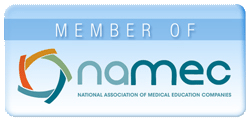Exploring Practice Patterns for Shift Work Disorder
Compass Points
Premiere Date: Tuesday, April 16, 2013This activity offers CE credit for:
- Physicians (CME)
- Other
All other clinicians will receive a Certificate of Attendance stating this activity was certified for AMA PRA Category 1 Credit™
Credit Expiration Date:
Wednesday, April 16, 2014
Note: Credit Is No Longer Available
 | Monique Johnson, MD, CCMEP Medical Program Director CME Outfitters, LLC Bethesda, MD |
 | Sandra Haas Binford, MAEd Senior Educational Design and Research Analyst CME Outfitters, LLC Bethesda, MD |
Roughly two in ten workers in the United States do some form of shift work, which puts them at risk for developing shift work disorder (SWD). In SWD, the shift worker must sleep at a time that is not in alignment with the internal circadian propensity for sleep. This misalignment leads to certain symptoms, including insomnia during times when sleep is needed, as well as excessive sleepiness during waking hours, when alertness is needed. In order to better understand the real-world care of SWD, educational planners at CME Outfitters partnered with leading sleep experts to investigate the practice patterns of primary care clinicians regarding SWD, using both national surveys and formalized in-depth interviews to gather quantitative and qualitative outcomes data.
This Compass Points™ article reports the current details of that investigation into SWD, reporting the use of evidence- and American Academy of Sleep Medicine (AASM) guidelines-based treatment by primary care physicians who care for patients with SWD.
To educate clinicians on current practice patterns for treating shift work disorder (SWD) and how these practices align with clinical recommendations in the practice parameters for SWD from the American Academy of Sleep Medicine.
At the end of this CE activity, participants should be able to:
- Describe areas where adherence the American Academy of Sleep Medicine guidelines for shift work disorder is suboptimal, as identified in the presented outcomes study.
- Increase implementation of recommended diagnosis and treatment strategies for patients with shift work disorder, in accordance with American Academy of Sleep Medicine guidelines.
This activity is supported by CME Outfitters, LLC
Physicians, physician assistants, and other health care professionals.
CME Credit (Physicians):
CME Outfitters, LLC, is accredited by the Accreditation Council for Continuing Medical Education to provide continuing medical education for physicians.
CME Outfitters, LLC, designates this enduring material for a maximum of .5 AMA PRA Category 1 Credit™. Physicians should claim only the credit commensurate with the extent of their participation in the activity.
Post-tests, credit request forms, and activity evaluations must be completed online at www.cmeoutfitters.com/TST783 (requires free account activation), and participants can print their certificate or statement of credit immediately (80% pass rate required). This website supports all browsers except Internet Explorer for Mac. For complete technical requirements and privacy policy, visit www.neurosciencecme.com/technical.asp.
Disclosure Declaration
It is the policy of CME Outfitters, LLC, to ensure independence, balance, objectivity, and scientific rigor and integrity in all of their CE activities. Faculty must disclose to the participants any relationships with commercial companies whose products or devices may be mentioned in faculty presentations, or with the commercial supporter of this CE activity. CME Outfitters, LLC, has evaluated, identified, and attempted to resolve any potential conflicts of interest through a rigorous content validation procedure, use of evidence-based data/research, and a multidisciplinary peer review process. The following information is for participant information only. It is not assumed that these relationships will have a negative impact on the presentations.
Dr. Johnson has no disclosures to report.
Ms. Haas Binford has no disclosures to report.
Howard Bliwise, MD, (peer/content reviewer) has no disclosures to report.
Joy Bartnett Leffler, MLA, NASW, CSE (planning committee) has no disclosures to report.
Sharon Tordoff, CCMEP (planning committee) has no disclosures to report.
Unlabeled Use Disclosure
Faculty of this CE activity may include discussions of products or devices that are not currently labeled for use by the FDA. The faculty have been informed of their responsibility to disclose to the audience if they will be discussing off-label or investigational uses (any uses not approved by the FDA) of products or devices.
CME Outfitters, LLC, and the faculty do not endorse the use of any product outside of the FDA labeled indications. Medical professionals should not utilize the procedures, products, or diagnosis techniques discussed during this activity without evaluation of their patient for contraindications or dangers of use.
Questions about this activity? Call us at 877.CME.PROS (877.263.7767).
CC-052-041613-00



